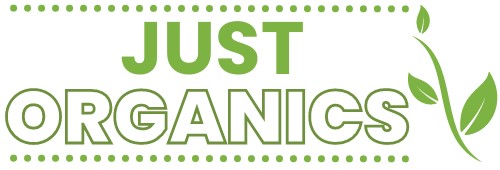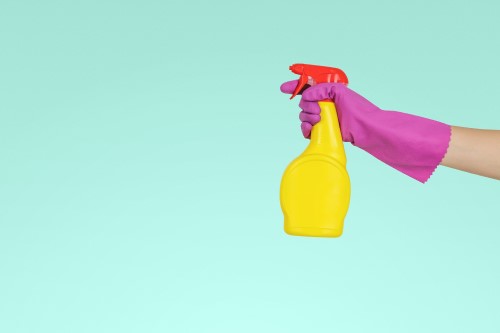We all want a clean home, but is a clean home worth dying for? Ok, a little dramatic, right? True, but, can you tell me exactly how conventional supermarket-bought cleaners are made and what chemicals they contain? They may help cut through dirt and leave a fragrance in the air, but does using them pose any risks? Read on, and hopefully, we can convince you to maintain a chemical-free home.
In this article, we will take a look at the common chemicals found in, what are for most people, everyday cleaning products. Then, once we’ve scared you enough, we’ll suggest some natural ways to replace these cleaners with natural ingredients, and provide practical tips on creating a healthier home.
Whether you want to make small changes or completely revamp your cleaning routine, this article will equip you with the knowledge and tools to do away with chemical cleaners for good!
Table of Contents
Key Takeaways
- Swap conventional cleaning products with organic ones made from plant-based ingredients.
- It’s easy to make cleaning products from simple ingredients – and you can save money!
- Consider non-toxic materials in furniture and decor choices, such as organic cotton or hemp fabrics.
- Choose furniture made from sustainable or recycled materials and avoid products treated with flame retardants.
- Regularly ventilate living space for fresh air circulation, as indoor air pollution can be up to five times worse than outdoor air pollution.

Understanding the Harmful Effects of Chemical Cleaners
Cleaners you pick up from the supermarket are so convenient and do a great job – I don’t think many of us would argue this point. Pricewise too, they’re relatively inexpensive, and we tend to buy the same ones over and again – many times the same ones we grew up seeing our parents use.
The problem is that we are far too trusting. We know that the cleaners do what they say, and we trust that they’re not harmful in any way. Unfortunately, our trust is misplaced. Chemical cleaners can harm your health and are not good for the environment either.
Many common cleaning products contain harsh chemicals that can irritate your skin, eyes, and respiratory system. These chemicals can also linger in the air and pollute indoor air. When these products are washed down the drain, they end up in our water systems and can contaminate rivers, lakes, and oceans.
Here’s a list of common chemicals, the type of products they are found in, as well as possible health risks:
| Chemical Name | Household Product | Possible Health Risks |
|---|---|---|
| Sodium Lauryl Sulfate | Shampoo, Soap | Skin and eye irritation, potential endocrine (glands and organs) disruption |
| Formaldehyde | Cleaning Products | Respiratory irritation, cancer risk |
| Triclosan | Antibacterial Soap | Antibiotic resistance, endocrine (glands and organs) disruption, skin irritation |
| Ammonia | Glass Cleaner | Respiratory irritation, eye irritation |
| Phthalates | Air Fresheners | Endocrine disruption, developmental and reproductive issues |
| Chlorine | Bleach, Disinfectants | Respiratory irritation, eye irritation, toxic fumes |
| Perchloroethylene (PERC) | Dry Cleaning Solvent | Neurological effects, potential carcinogen (substance linked to cancer) |
| Parabens | Cosmetics, Lotions | Hormone disruption, potential link to breast cancer |
| Ethylene Glycol | Antifreeze, Cleaners | Poisoning if ingested, skin and eye irritation |
| Ammonium Quaternary Compounds | Disinfectants | Respiratory irritation, potential environmental harm |
In addition, the manufacturers of cleaning products add compounds to their products that add a more pleasing fragrance. These are often derived from natural sources but can cause eye and skin irritation. The table below lists some natural compounds and where they are found in nature:
Compounds Obtained from Natural Sources:
| Compund Name | Natural Source |
|---|---|
| Limonene | Citrus fruits |
| Linalool | Lavender, mint |
| Geraniol | Rose, geranium |
| Citronellol | Rose, geranium |
| Coumarin | Various plants |
| Eugenol | Clove oil |

Unfortunately, manufacturers can also create their own synthetic fragrances. In a lot of places I referenced while doing my research, these chemicals range between ‘not harmful’ to being called a ‘volatile fragrance ingredient‘ that can cause damage underneath the skin.
Synthetically Produced Chemicals:
| Chemical Name | Source |
|---|---|
| Benzyl Alcohol | Essential oils |
| Hexyl Cinnamal | Fragrance compounds |
| Alpha-Isomethyl Ionone | Fragrance compounds |
| Amyl Cinnamal | Fragrance compounds |
Not many of us know enough to scan the labels for dangerous chemicals, but then there are times when, even if we do check, we won’t find anything:
Fragrance companies are not legally required to list their ingredients on product labels. Therefore, many fragrance chemicals are simply listed as ‘fragrance’. This allows the company to protect its formula as a trade secret.
INDUSTRIALCHEMICALS.GOV.AU
What I’ve listed here is just scratching the surface of how chemicals are used in traditional cleaners. However, my hope if that I’ve gotten you to think about what effect such chemicals may be having on you. And don’t forget that it’s not just you – it’s your partner, your children, your elderly relatives and even your pets that can be affected.
Next, let’s look at how you can benefit from organic cleaning and how it benefits the environment.
Benefits of Organic Cleaning
If you’re wanting to reduce your footprint, then switching to organic cleaning solutions is a big step in that direction. You can forget about those chemicals and the great unknown of supermarket cleaners and go with using some really simple ingredients that do exactly the same thing!
Environmental Benefits of Organic Cleaners
First, let’s look at organic cleaners and their benefits to the environment. I’ll do this in a roundabout way – by looking at the damage that chemicals do when we use them around the home. Here’s a list of how the chemicals in everyday household products can impact on the environment:
| Household Use | Chemical Examples | Environmental Impact |
|---|---|---|
| Toilet Cleaner | Bleach | Contaminates water bodies and disrupts aquatic ecosystems. |
| Ammonia-based cleaners | Can release harmful fumes indoors, affecting indoor air quality. | |
| Floor Cleaner | Phenols | Can release volatile organic compounds (VOCs) into the air, leading to indoor air pollution. |
| Quaternary | Some formulations may contain non-biodegradable surfactants, impacting aquatic life. | |
| Ammonium Compounds | Chemical runoff can contaminate soil and water bodies, affecting plant and aquatic ecosystems. | |
| Air Freshener | Aerosol sprays | Many air fresheners release VOCs that contribute to indoor air pollution and can be harmful when inhaled. |
| Plug-ins | Some contain phthalates, which are endocrine (gland and organ) disruptors and may affect reproductive systems. | |
| Scented candles | Fragrance chemicals can react with indoor air pollutants, forming secondary pollutants. | |
| Laundry Detergent | Phosphates | Phosphates can lead to nutrient pollution in water bodies, causing algal blooms and aquatic damage. |
| Surfactants | Some surfactants can persist in the environment, affecting aquatic life. | |
| Optical Brighteners | Some formulations may contain non-biodegradable or poorly biodegradable components. |
When we use natural, organic ingredients, we don’t have to worry about contaminants and pollution. Bear in mind too, that the above is a pretty short list, and just the tip of the iceberg. When you take into account all the other chemical-laden products you use around the home – bug sprays, paints and thinners, car cleaners, and herbicides, just to name a few – you’ll see that there is so much that we use that can harm the environment.
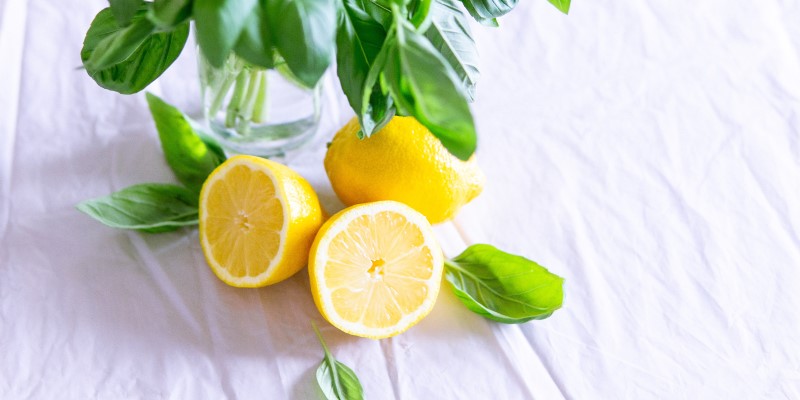
Cheap, Natural Ingredients With Numerous Benefits
Another advantage of organic cleaning is how cheap it is! You can make organic cleaners using simple household items like vinegar, baking soda, lemon juice, and essential oils. I’ll give you a few recipes to try in the next section. These sorts of ingredients are really useful beyond cleaning too:
| Ingredient | Uses Around the Home |
|---|---|
| Vinegar | Fruit & Veggie Wash: Dilute with water to clean produce. |
| Deodorizer: Place a bowl of vinegar to absorb odours in rooms. | |
| Deodorizer: Place in shoes, fridges, or carpets to absorb odours. | |
| Descaler: Remove mineral deposits from appliances like kettles and coffee makers. | |
| Baking Soda | Deodorizer: Place in shoes, fridges, or carpets to absorb odors. |
| Fire Extinguisher: Can be used as an emergency fire extinguisher for small grease fires. | |
| Silver Polish: Create a paste to clean and polish silver items. | |
| Insect Bite Relief: Make a paste with water for soothing insect bites. | |
| Lemon Juice | Natural Bleach: Use as a natural bleach alternative for laundry. |
| Brass Cleaner: Create a mixture to clean and shine brass items. | |
| Ant Repellent: Spray lemon juice to repel ants from entry points. | |
| Deodorizer: Place in shoes, fridges, or carpets to absorb odours. | |
| Essential Oils | Aromatherapy: Diffuse essential oils for relaxation or energy. |
| Linen Spray: Mix with water to create a refreshing linen spray. | |
| Room Freshener: Create a natural room spray with essential oils. | |
| Massage Oil: Dilute essential oils for use in massages. |
Are you ready to give these homemade cleaners a try? If you do, you can:
- save money
- no longer worry about what chemicals you’re using around your family
- help the environment and lower your footprint
- create a healthier living space
So why not switch to organic cleaning today and enjoy a spotless home without compromising your health or the well-being of the planet? Let’s take a look at some useful recipes.
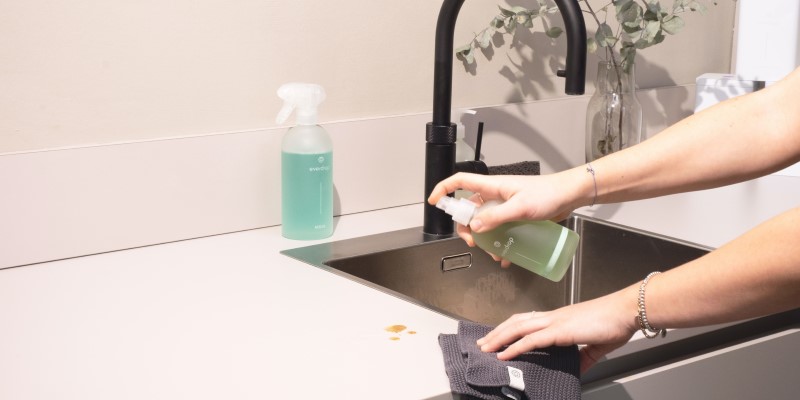
Natural Ingredients to Maintain a Chemical-Free Home
Let’s make the switch to a chemical-free home with some easy recipes using ingredients that you’ve probably already got and can’t remember buying.
Simple Cleaning Recipes Using Vinegar
Source: FamilyHandyman.com
All-Purpose Cleaner
Ingredients:
- Spray bottle
- Small funnel
- 1/2 cup white vinegar
- 2 tablespoons baking soda
- Tea tree essential oil
- Eucalyptus essential oil
Instructions:
- Take the top off an empty spray bottle and place a small funnel into the opening.
- Pour in 1/2 cup of white vinegar.
- Add 2 tablespoons of baking soda and wait for foaming to subside.
- Add 10 drops each of tea tree and eucalyptus essential oil.
- Fill the rest of the bottle with water.
- Screw the spray top onto the bottle and shake well before use.
Simple Cleaner Soft Scrub
Ingredients:
- Empty dish soap bottle
- Small funnel
- 1 1/2 cups baking soda
- 1/2 cup liquid Castile soap
- 2 tablespoons white vinegar
- 2 tablespoons water
- Tea tree essential oil
Instructions:
- Take the cap off an empty dish soap bottle and wash it out.
- Place a small funnel into the opening and pour in baking soda, liquid Castile soap, white vinegar, and water.
- Wait for foaming to subside.
- Screw the cap onto the bottle and shake vigorously for around 2 minutes.
- To use, squeeze the soft scrub cleaner onto the surface and scrub with a wet washcloth or cleaning brush.
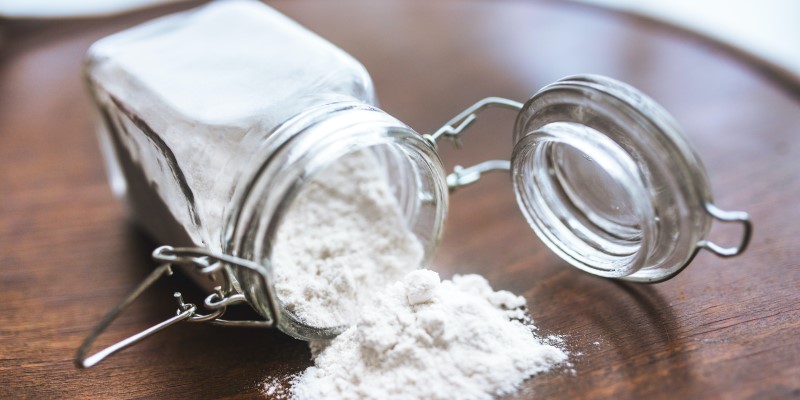
Natural Toilet Bowl Cleaner
Ingredients:
- Large squirt bottle
- Small funnel
- 1/3 cup liquid Castile soap
- 2 cups water
- 2 tablespoons baking soda
- Lemon essential oil
- Eucalyptus essential oil
- Lavender essential oil
Instructions:
- Take the top off a large squirt bottle.
- Place a funnel into the opening and pour in liquid Castile soap, water, and baking soda.
- Wait for foaming to subside.
- Add 5 drops each of lemon, eucalyptus, and lavender essential oils.
- Screw the cap onto the squirt bottle, shake well, and squirt into the toilet bowl.
- Allow the cleaner to sit for a few minutes, then scrub the bowl with a toilet brush.
Window Cleaner
Ingredients:
- Empty spray bottle
- Small funnel
- 1/2 cup white vinegar
- 1 tablespoon cornstarch
- 2 cups water
- Lemon essential oil
- Grapefruit essential oil
Instructions:
- Take the top off an empty spray bottle and place a small funnel into the opening.
- Pour in white vinegar, cornstarch, and water.
- Add 5 drops each of lemon and grapefruit essential oils.
- Screw the spray top back onto the bottle and shake well before use.
Simple Cleaning Recipes Using Baking Soda (Bi-Carb Soda)
Mould Cleaner (Tile / Bath / Sink / Glass)
Ingredients:
- Old plate / small bowl
- White Vinegar
- Baking Soda
- Water
- Pastic Scraper / Abrasive Sponge
Instructions:
- Mix two parts baking soda with one part vinegar and one part water.
- Create a thick paste.
- Spread paste onto small, non-porous surfaces with mould (glass, baths, tiles, sinks).
- Scrub off once dry and rinse with warm water.
Stove Cleaner (Tile / Bath / Sink / Glass)
Ingredients:
- Old plate / small bowl
- 1/2 Cup of Baking Soda
- 3 Teaspoons of Liquid Castile Soap
- 10 Drops of Eucalyptus Essential Oil
Instructions:
- Combine all ingredients into a container
- Mix well
- Use the mixture to clean your stoves, sinks and grout
- Go over surfaces with a towel dipped in warm water.
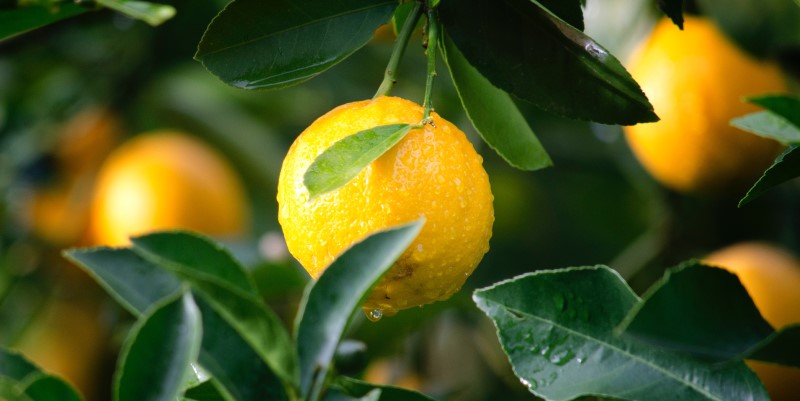
Simple Cleaning Recipes Using Lemons
Microwave Cleaner
Ingredients:
- Small Microwave-Safe Container
- 1 Lemon
- Clean Tea Towel / Cleaning Rag
- 1/2 Cup of Water
Instructions:
- Measure 1/2 cup of Water into the container
- Slice the Lemon in half, squeeze the juice into the water, drop Lemon halves into the bowl too
- Microwave on High for 3 minutes, until the water comes to a boil
- Remove the Lemon mixture and clean the microwave with your cloth
- Stubborn dirt can be removed by dipping the cloth in the Lemon mix and using a bit of elbow grease
Simple Cleaning Recipes Using Essential Oils
Orange-Scented Oil Wood Polish
Ingredients:
- 1/4 Cup of Olive Oil
- 1/4 Cup of White Vinegar
- 20 Drops of Orange Essential Oil
- Cleaning Rag
Instructions:
- Combine all ingredients in a jar with a lid and shake well right before using as the oil and vinegar will separate
- Use a rag to rub the oil onto wood surfaces, including floors, tabletops, cupboards, furniture and wooden cutting boards
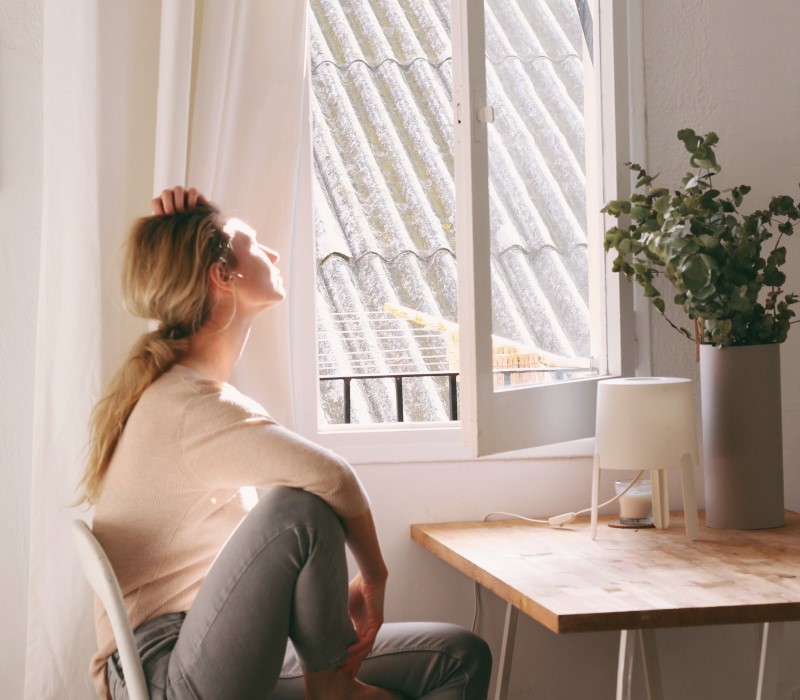
Creating a Healthier Living Space
It’s not only swapping over your cleaners to the eco-friendly alternatives we’ve suggested that can create a healthier living space. Looking at alternatives can extend to the materials and decor choices in your home.
Synthetic materials can release Volatile Organic Compounds (VOCs) into the air. Opting for organic cotton or hemp fabrics helps to clear the air – literally. Furniture is another way to lower your carbon footprint. With a little research, you can source furniture made from sustainably-sourced wood, or even recycled materials. Avoid products treated with flame retardants, as they often contain toxic chemicals that can harm your health.
If nothing else, it’s also a good idea to ventilate your living space regularly. Just opening windows allows fresh air to circulate and helps flush out pollutants that may have built up indoors, so proper ventilation is crucial for maintaining a healthy living environment.
According to the Environmental Protection Agency (EPA), indoor air pollution is among the top 5 environmental risks to public health. In fact, indoor air quality can be up to 5 times worse than outdoor air quality.
IONMAX.COM.AU
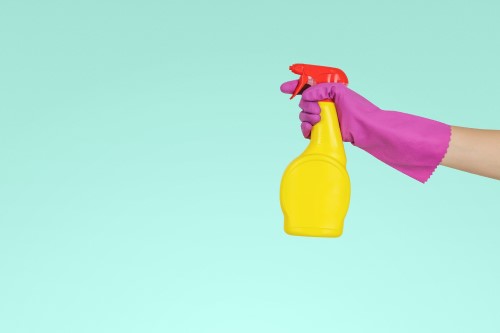
Conclusion
In this article, we looked at chemical cleaners and how the chemicals they contain can affect our bodies – from our skin and right down into our organs. If you’re inclined to do so, you also have a few chemical names to look out for (and avoid!) when you buy your next round of cleaning products. And if you’ve had enough with skin irritations and the great unknowns of using chemicals, you have a few easy cleaning recipes to try out.
Hopefully, you’ll agree that by making a few changes to your cleaning routine, you can create a healthier living space for yourself and your family. And when you do this, you’re doing your part for the environment too. Remember that small changes can make a big difference when eliminating chemicals from your home. So why wait? Start transitioning to organic cleaning today and enjoy the benefits of a chemical-free environment!
About the Author

CHARLIE
Hi, my name is Charlie. I’m the founder of Just Organics. I have a background in Environmental Health and am passionate about animal welfare. I have been using organic products for more than ten years and would like to share my love of products made from nature.
I hope you find value in our articles. If there’s anything you’d like us to write about or if you’d just like to connect with us, feel free to send us a message.
